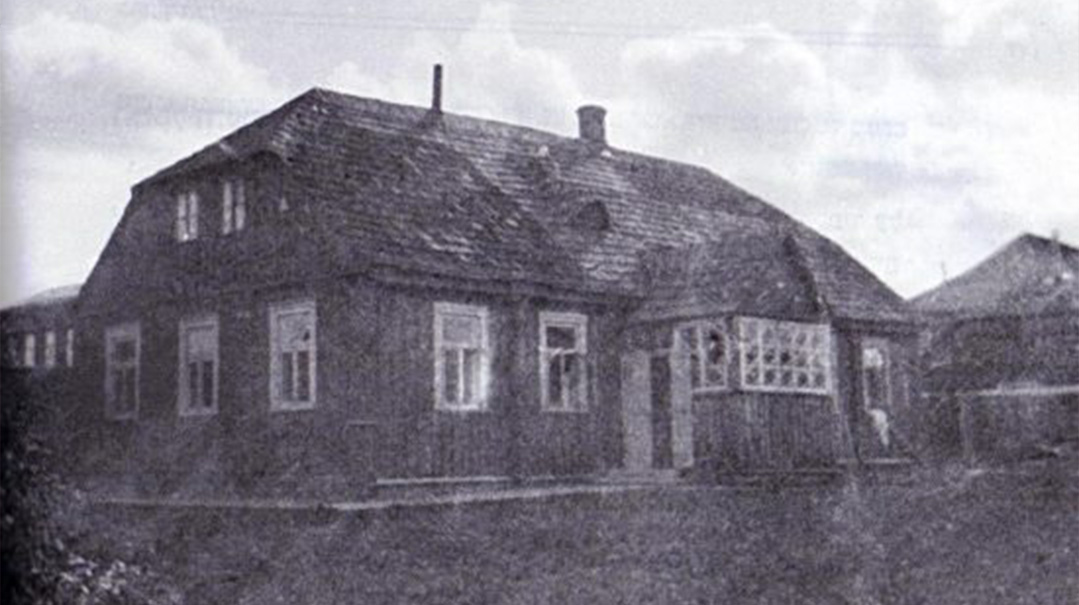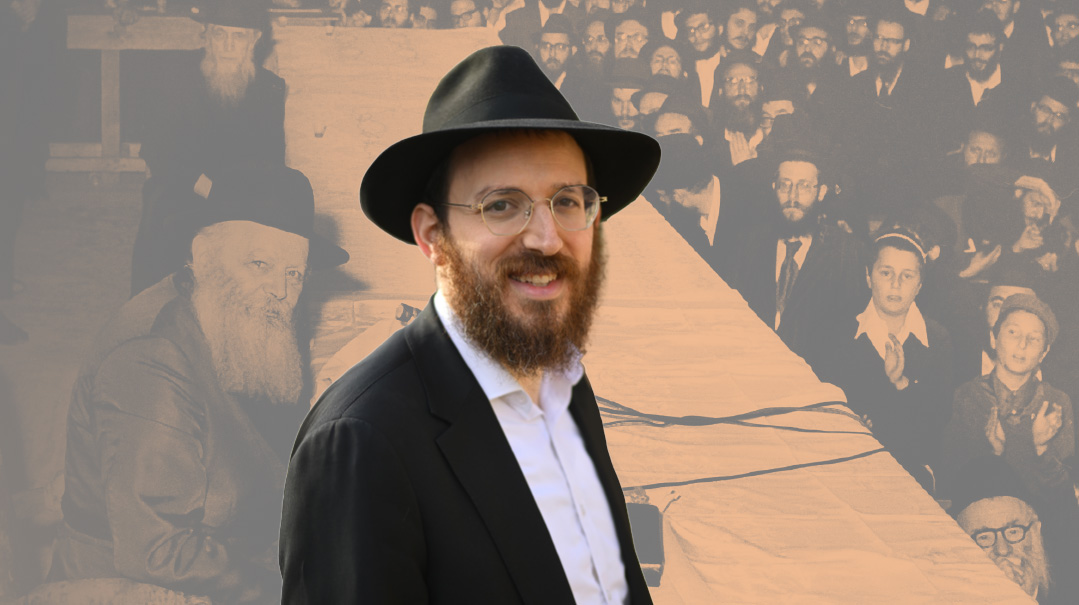Builder of Leaders, Molder of Men: The Eternal Influence of the Alter of Slabodka
| April 11, 2022
Photos: DMS Yeshiva Archives, Slabodka Archives, Chodosh Family, Feivel Schneider, Dr. Shlomo Tikochinsky , Kaunas Regional State Archives, Agudath Israel of America Orthodox Jewish Archives
"We have sustained a great loss with the passing of our teacher, the great light of the Jewish People ztz”l.
This is a man who spent his long life attempting to stay in the shadows, and from that small corner emanated a light which lit up the world! How great are his deeds! We can assert with surety that if not for him then Torah would have been forgotten, Heaven forbid. Behold: those yeshivos which did not benefit from his involvement are now closed, whereas all of the yeshivos in whose establishment and development he invested himself are standing strong and flourishing!”
“Thus the great mashgiach of Mir, Rav Yerucham Levovitz, eulogized his rebbi Rav Nosson Tzvi Finkel, known to all as the Alter of Slabodka. As Rav Yerucham surveyed the Lithuanian yeshivah landscape of 1927, he accurately described the Alter’s decisive impact on its development over the previous half century.
The Alter’s own yeshivos in Slabodka and Chevron were just the most obvious testaments to his influence. He also opened a branch of the yeshivah in Slutzk, and had a direct impact on Telz, Mir, Lomza, Kobrin, Radin, Grodno, Ponevezh and other yeshivos. It seemed that the growth of Torah at the turn of the 19th and 20th centuries was the fruit of decades of planting done by the Alter.
Yet Rav Yerucham couldn’t have known at the time that his words were prophetic as well. A little more than a decade following the Alter’s passing, the world would experience destruction on a scale /previously unimaginable, and the Torah world would once again have to rebuild. As the institutions emerged from the ashes in Eretz Yisrael and the United States, it became evident that the lion’s share of yeshivos and individuals who built them could be traced to the vision of a single individual: the Alter of Slabodka, Rav Nosson Tzvi Finkel.
How could one man, who passed from This World decades prior, leave such a profound legacy? Who was this person who signed his name as “Hatzafun” — the hidden one — yet whose spirit permeated a yeshivah that produced so many of the 20th century’s Torah leaders? How could a single pioneer’s approach to learning and character development lay the seeds for so many diverse institutions across the globe?

The Talmud Torah of Kelm
Chapter I
To Seek Greatness
Any attempt to describe the legacy of Slabodka and its influence must focus on the life story of its visionary yet mysterious founder.
Rav Nosson Tzvi Finkel (also called Nota Hirsch) was born in 1849 in the small Lithuanian town of Rassein. Not much is known about the circumstances of his childhood, other than that his parents were Moshe and Miriam Finkel.
Orphaned at a young age, he was adopted by an uncle in Vilna who sent him to a yeshivah, where he excelled. When Rav Nosson Tzvi was 15 years old, he married Gittel, the daughter of Meir Bashis. Gittel was also the granddaughter of Rav Eliezer Gutman, a leading rabbinic figure in Kelm’s Jewish community. (Her siblings would later adopt the name Wolpert). Following their marriage, Rav Nosson Tzvi continued his studies in Kelm for several years while being supported by his in-laws.
Our story begins to take form in 1868 when at the age of 19, Rav Nosson Tzvi was delivering a speech in his hometown of Rassein. The local rabbi, Rav Alexander Moshe Lapidus, took notice of the young man and suggested that he meet Rav Simcha Zissel Ziv Broide, the Alter of Kelm. (“Alter,” literally “elder,” was a term used to denote an experienced, wise, and revered spiritual mentor. Eventually Rav Nosson Tzvi himself would become synonymous with the term.)
Rav Simcha Zissel was one of the prime figures in the mussar movement, a brainchild of Rav Yisrael Salanter. Rav Yisrael began his movement in the 1840s, when he began to circulate among the shuls of Vilna, preaching mussar teachings focused on character development, interpersonal relationships, and the perfection of one’s inner world of thought and intention. He saw these teachings as essential for a more engaged spiritual and religious life.
As with any new trend, the mussar movement was viewed with suspicion by more traditionalist elements within the Jewish community and the rabbinical establishment. It would take the quiet but unbending determination of Rav Nosson Tzvi Finkel to weave this marginalized and oft-derided approach into the very fabric of the yeshivah system.
Rav Nosson Tzvi’s first exposure to mussar was Rav Simcha Zissel. A former colleague’s recollections of the early Kelm years recounts how Rav Nosson Tzvi was drawn into Rav Simcha Zissel’s circle.
“I recall him as a young scholar being supported by his in-laws in Kelm. He was quite knowledgeable and was proficient in Hebrew grammar as well as having a command of German… Around this time the mussar movement began to make inroads in town, as Rav Simcha Zissel delivered mussar talks on Friday night and began to attract a following. Initially Rav Nosson Tzvi was among those who were opposed to this new phenomenon… One Friday we were sitting in the kloiz… and we noticed a marked change in our friend Notta Hirsch. Indeed, he had become a follower of Rav Simcha Zissel and henceforth was completely associated with the Mussarites.”
Two years before he met Rav Nosson Tzvi, in 1866, the Alter of Kelm founded a yeshivah in the town for high-school-age students. The Kelm Talmud Torah (as it was known) devoted the first half of the day to the study of Gemara but also devoted significant time to the study of mussar. Students in Kelm were not judged, as in other Lithuanian yeshivos, by their Talmudic prowess. Instead, Rav Simcha Zissel focused on their character traits and spiritual growth. In an era where yeshivos did not employ mussar mashgichim, this was quite a departure from the norm.
Perhaps even more surprisingly, Rav Simcha Zissel also introduced (with the endorsement of Rav Yisroel Salanter) general studies subjects such as geography, mathematics, and Russian into the Talmud Torah curriculum for three hours a day. Kelm stressed the importance of orderliness of mind and action. An emphasis on punctuality, neatness and methodical self-improvement was a primary focus, and its unique educational philosophy developed future leaders among its students.
It was in this setting that Rav Nosson Tzvi began to spread his wings. Initially employed by Rav Simcha Zissel in 1871 to teach Tanach, he shortly afterward began to deliver mussar shmuessen to the students. Very quickly, it became clear that the young teacher possessed rare oratorical skills, and he developed a uniquely positive rapport with his young charges.
Rav Dov Katz, author of Tenuas HaMussar, described his first meeting with the Alter many years later: “Even in a first encounter, he penetrates you and inspires fear with his great insight and shrewdness.”
In 1876, the Alter of Kelm transferred his Talmud Torah 170 kilometers northwest to the town of Grubin (in current-day Latvia), near the Baltic Sea, with the assistance of the Dessler family. Rav Nosson Tzvi followed. His family did not join him, however, and this would be the beginning of more than three decades where he would live as a parush. It was in Grubin where Rav Nosson Tzvi began to develop his own mussar methodology.
The strong relationship between teacher and student didn’t prevent young Rav Nosson Tzvi from parting ideological ways with Rav Simcha Zissel. Rav Nosson Tzvi believed in a different approach to mussar, and he lacked enthusiasm for Kelm’s inclusion of general studies and openness to Western ideas. Soon he would have the opportunity to implement his own vision.
Oops! We could not locate your form.







